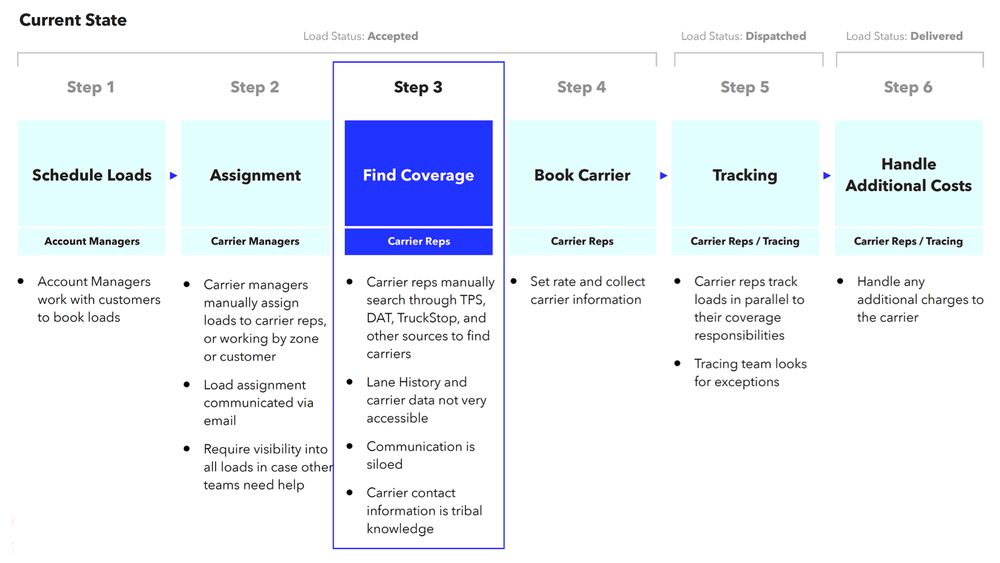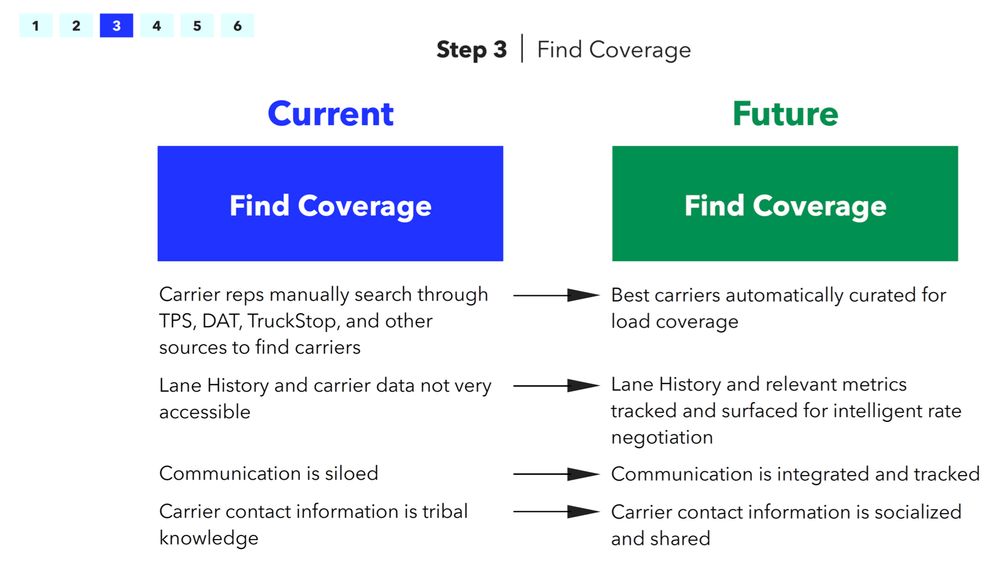Outline user journeys
We once designed and built a digital onboarding workflow for small-business banking customers in Canada. The tool transformed a paper process into a fully self-service experience that could be entirely completed online. The original journey required the customer to fill out a lot of paper forms, fax them in, go to the branch to sign additional forms—ultimately delaying their ability to use the bank’s services and creating a significant burden for branch personnel.
In the context of a workshop, it is valuable to have SMEs in the room to represent the system roles with high value, because senior sponsors’ bias could lead the product in another direction. In this example, we needed an individual who understood the full current state of the onboarding process as well as an individual who understood the bank-wide impact of changing the process (e.g., retraining staff and informing new customers).

Mapping the user journey is a conversational process that the Devbridge facilitators draw and document on a whiteboard. There are two states of the journey to document:
- The current user journey (if one exists; e.g., customer fills out paper form, faxes, goes to branch)
- The ideal future state journey (complete application online, sign digitally, receive debit card via mail)
The mapped journeys will start revealing overarching epics for the product. While the facilitator is mapping the journeys, the second in command should start extracting epics on sticky notes of a different color and grouping them on the board. These epics will influence the story-mapping exercise that is soon to follow.

As journeys for each role are mapped, the alignment between stakeholders in the room inevitably starts to break down. Most groups come in well aligned in terms of the vision, but at the operational level, changes in process affect different SMEs in different ways. Anticipate and plan for this. If stakeholders are arguing over certain epics or the ideal future journey, capture the notes and inform the room that you’re moving on. Have a group of sticky notes that are “parked” because they require further clarification. These decisions are often political and should go through the main sponsor outside the workshop. Otherwise, you risk derailing the exercise and not creating value at the end of the day.
It is a good idea to introduce a break after this exercise, clean up the boards, reorganize the epics, and prepare for story mapping.